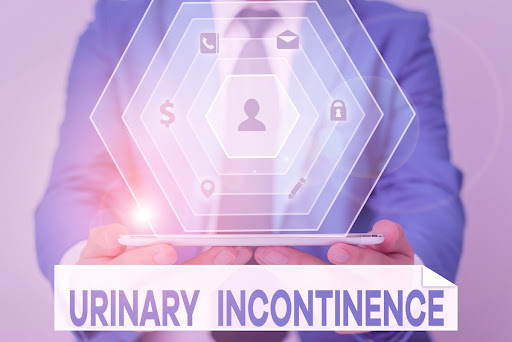At KCUC Urology and Oncology, we see many patients with male urinary incontinence issues. Failure to control urination can be an especially intrusive condition that can cause both physical and social/emotional issues. Luckily, we have a variety of treatments available to help men overcome this problem and get back to their normal activities. Read on to learn more about the causes, symptoms and available treatments for male urinary incontinence.
What Are The Different Types of Urinary Incontinence in Men?
There are three major classifications of incontinence – Urge Incontinence, Stress Incontinence, and Overflow Incontinence. It is possible to have more than one type simultaneously.
Urge Incontinence, also referred to as Overactive Bladder is leakage that occurs along with a strong need to urinate suddenly. Because of the sudden urge, patients may not have time to reach the bathroom before urinating.
Stress Incontinence is leakage that happens when the patient strains muscles responsible for urinary control. Incontinence can occur when coughing, sneezing, exercising, or straining (lifting something heavy). It is most common among middle aged and older women, however men may experience it after prostate removal.
Overflow Incontinence also called incontinence without sensation occurs when the bladder empties poorly and often without good sensation. Because the patient can’t feel it, urine may leak out through a relatively weak urinary sphincter.
Symptoms of Urinary Incontinence
Each type of incontinence has different symptoms. Here are the most common things to look for:
Urge Incontinence Symptoms
- Sudden, strong urges to urinate
- Inability to get to the bathroom in time
- Need to urinate frequently, especially at night
- Urge to urinate when you hear water running
Symptoms of Stress Incontinence
- Urine leaks when lifting heavy objects, exercising, coughing, sneezing, etc.
- Symptoms worsen when your bladder is full or you are more active.
Symptoms of Overflow Incontinence
- Usually patients are unaware when the leakage occurs.
- Leakage happens when rising from sitting or at night when the bladder fills.
- Some patients note a constant, slow leaking through the day that worsens with cough, sneeze, and other physical activities.
- Sometimes the only indication is a damp pad or underwear.
What Causes Male Urinary Incontinence?
Because there are different types of urinary incontinence, it’s important to get the correct diagnosis. Causes can vary depending on the type of incontinence you are experiencing. Here are some common causes of the three different types of urinary incontinence.
Causes of Urge Incontinence
- Most commonly urge incontinence is due to changes in the bladder muscle and pelvic nerves
- Ingesting bladder irritants such as coffee, tea, chocolate or acidic fruit juices can worsen the symptoms
- Recurrent urinary tract infections (more common among women)
- Bowel problems including chronic constipation or irritable bowel disease
- Certain medications
- Nervous system damage due to Multiple Sclerosis, Parkinson’s disease, Alzheimer’s disease, stroke, diabetes, and other causes
Causes of Stress Incontinence
- Most commonly this disorder is due to weakness in the pelvic floor muscle or external sphincter
- This weakness may be exacerbated by pelvic or prostate surgery
Causes of Overflow Incontinence
- Loss of sensation in the bladder and sphincter due to aging
- Neurological conditions due to injury or diseases such as diabetes
- Obesity
- Side effects from medication that cause the bladder to be over relaxed
How To Treat Male Urinary Incontinence
Once you have been diagnosed, we have several treatment options for urinary incontinence. Treatment usually begins with noninvasive therapy such as behavioral changes, lifestyle changes, or medication. These may include:
- Fluid and diet management
- Bladder retraining
- Bowel management
- Pelvic floor exercises
- Biofeedback
- Special absorbent pads and underwear
- Medicine to relax your bladder muscles or make less urine at night
Surgery and Implanted Devices
- Bulking Agent – for certain types of stress incontinence a thick substance can be injected into the area around the bladder to support it.
- Electrical Device – in an outpatient procedure a small electrode is implanted that delivers a mild electrical signal to the pelvic nerves to calm the bladder.
- Sling Surgery – an outpatient procedure where a small strip of mesh is implanted under the bladder to support the bladder neck and urethra.
- Artificial Urinary Sphincter – this implanted device replaces the natural muscle that controls the urine flow at the outlet of the bladder.

